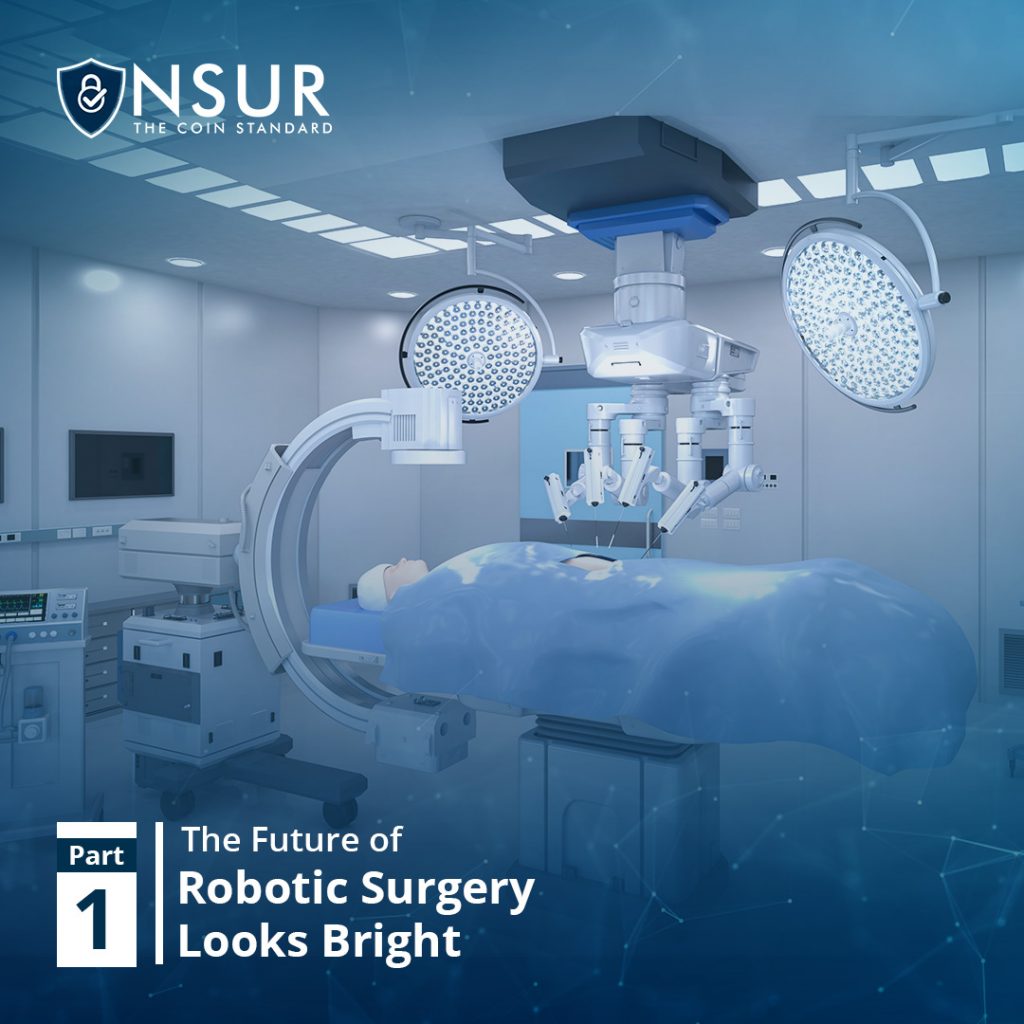
The future of robotic surgery looks bright, with a limitless ability to promote surgical techniques and patient experience. With robotic-assisted surgery, a growing number of diseases and conditions can be identified, improvised, and addressed. This can reduce infection risks and provide enhanced precision, accuracy, and flexibility to surgeons.
It takes a high level of concentration and precision to practice surgery. It is important that surgeons make no mistakes in surgical Operation theaters and utilize all assistance they can get. This is where surgical robots can assist surgeons in operation theaters to benefit patient outcomes.
Introduction to the history of robot-assisted surgery
- It was in the 1970s when NASA introduced telesurgery to the world.
- The first surgical robot was used in orthopedic surgery in 1983.
- To avoid mistakes caused by hand tremors, the first surgical robot was used during a brain biopsy in 1985. It was the first laparoscopic procedure.
- The popularity of laparoscopic surgery in the 1990s led to the development of many new systems and procedures.
- In 1991, telepresence systems allowed surgeons to work without physically being present.
- A robotic hip replacement device with task autonomy got approval from the FDA in 1992.
- Upon human authorization, ROBODOC can perform certain pre-programmed tasks.
- In 2000, Intuitive Surgical, Inc. introduced its first robotic Da Vinci Surgical System for general and laparoscopic surgery. And later robotic surgeries were performed in a variety of settings because of the robotic system’s unique skills.
- The US FDA approved the first robotic radiation therapy machine in 2001.
- In 2009, remotely operated catheters were used to operate on regions that were not accessible via constrictive laparoscopy.
- An autonomous surgical robot called STAR sutures a severed pig intestine in 2022.
- In the future, robotic surgery will progress toward more functional, intelligent robotic systems. This will allow it to perform a larger and more diverse range of operations with fewer complications.
Robotic surgical system advancements have several advantages over conventional surgery. The first part of this article will take you through a few of them.
Advantages of Robotic Surgery
As robotic surgical systems become more common, precision has improved, blood loss and complications have decreased, scarring has diminished, and recovery has been accelerated.
Many benefits are associated with robotic surgery, both for surgeons and patients. Robotic surgery also takes less time than traditional surgery due to the smaller incisions and improved accuracy. This enables patients to recover faster after surgery compared with open surgery. When patients recover from surgery, they feel less pain and have only minor scars. Additionally, the cost is minimal due to the shorter hospital stay. Patients can go back to their routine work with ease within a short period of time after surgery.
Doctors benefit most from robotic surgery because robotic arms can deliver a higher level of precision. Surgeons can accurately work on difficult-to-reach areas during surgery without causing additional damage to the patient’s tissues. The problem of hand tremors is prevalent in many surgeons when performing surgeries, and robots may provide an answer to this problem.
In conventional surgery, the doctor relies on the surgical staff for help. For robotic surgeries, the robot arms are fitted with high-quality cameras capable of showing all areas more clearly. As a result, surgery can be performed more precisely because surgeons can see everything more clearly and avoid making even minor mistakes.
Surgical procedure data can also be stored and analyzed in order to learn, improve performance, and assess post-surgical outcomes.
Another advantage is that the entire surgical procedure data can be stored and can be viewed for learning, performance improvement, and post-surgery analysis. This can be done with the help of a medical device management system known as ORNet surgery.
Robotic Surgery Risks
We mentioned many advantages that robotic surgery offers, but the technology also has risks. It is possible to contract a minor infection during robotic surgery. It is possible for the patient to experience breathing difficulties and bleeding as a result of the procedure as with any surgery. Malfunctioning of robots is a significant risk factor in surgery, but it is unlikely to occur. The procedure may cause injuries, cuts, or tears to the surrounding organs, as well as nerve damage. Even minor errors can sometimes cause permanent damage to the organs.
As devices become more advanced, their vulnerabilities to cyberattacks increase, and the risk of data breaches in the healthcare industry are much higher.
For robotic surgical devices to be effective, surgeons need to learn new skills through specialized training and acclimate surgical methods to the new technology. The change can be challenging for surgeons who have specialized in more traditional procedures.
Robotic surgery systems are highly expensive and need a huge investment. Additional funds are spent on installation, annual maintenance, and staff training. This is also one of the many other reasons for the high-cost of surgeries, which appears to be unaffordable for the average layperson, particularly in developing countries where access to advanced surgical techniques is limited.
Closing Thoughts
In the healthcare industry, robotic technology has become increasingly popular. Currently available robotic systems and those under development are transforming how surgeons and patients accept them. The global surgical robotics market is forecast to reach USD 9.59 billion by 2027, with a robust revenue CAGR of 24.6%.
The MedTech sector is experiencing rapid growth as robotic surgery becomes more and more popular. Over the last 20 years, Intuitive Surgical’s da Vinci® Surgical System has been a leading robotic surgery system on the market. Additionally, Johnson & Johnson, Stryker, Hansen, Brainlab, and Medtronic are among the leading manufacturers.
In Part two, we will light up on hi-tech advancements in the surgical robotic system which can improve the overall real-time experience of surgeons and patients. By using artificial intelligence in robotics, such systems can learn from data and perform numerous significant tasks without the assistance of humans. Therefore, you need to be familiar with the idea of hi-tech robots, how they are used in the medical field, as well as the types of robots that are used in the healthcare industry.











